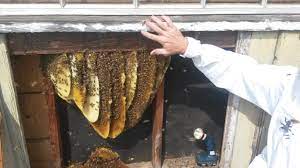
In the intricate web of Earth’s biodiversity, every species plays a crucial role. Among these, bees stand out as indispensable pollinators, facilitating the reproduction of countless plant species and ensuring the stability of ecosystems worldwide. However, bee populations are under threat due to various factors, including habitat loss, pesticide use, climate change, and diseases. To mitigate the decline of bee populations and safeguard their crucial ecological role, bee relocation emerges as a promising conservation strategy.
Understanding the Importance of Bee Relocation
Bee relocation, also known as bee rescue or bee removal, involves safely removing colonies of bees from areas where they pose a threat to human activities or safety and relocating them to suitable habitats. This practice aims to preserve both the bees and the ecosystem services they provide while addressing human concerns.
The Process of Bee Relocation
Bee relocation typically begins with a thorough assessment of the situation by trained professionals. This assessment includes identifying the species of bees involved, evaluating the size and health of the colony, and determining the best approach for relocation.
Once the assessment is complete, bee relocation specialists use various techniques to safely remove the bees from the area. This may involve carefully capturing the queen bee and relocating her with the rest of the colony to a designated bee-friendly location, such as an apiary or natural habitat.
Ecological Impact of Bee Relocation
Bee relocation not only preserves bee populations but also has significant ecological benefits. By relocating bees instead of exterminating them, this practice helps maintain biodiversity and ecosystem balance. Bees play a crucial role in pollinating flowering plants, including many food crops. Without bees, the reproduction of these plants would be severely compromised, leading to cascading effects throughout the ecosystem.
Moreover, bee relocation can contribute to the conservation of endangered plant species that rely on specific pollinators for reproduction. By ensuring the continued presence of bees in natural habitats, bee relocation supports the preservation of these vulnerable plant species and helps prevent further biodiversity loss.
The Role of Bee Removal Service in Conservation
Professional bee removal services play a vital role in the successful implementation of bee relocation efforts. These services employ trained experts who have the knowledge and experience to safely remove bees from various locations without harming the insects or the surrounding environment.
When faced with situations where bees have established colonies in urban or residential areas, bee removal services offer a humane and environmentally friendly solution. Instead of resorting to extermination methods that can harm bee populations and disrupt ecosystems, bee removal services relocate the bees to suitable habitats where they can continue their essential role as pollinators.
Moreover, bee removal services often collaborate with conservation organizations and local authorities to promote bee-friendly practices and raise awareness about the importance of protecting bee populations. By educating the public about the ecological significance of bees and offering sustainable solutions for bee-related issues, bee removal services contribute to broader efforts aimed at conserving biodiversity and preserving ecosystems.
Summary
In conclusion, bee relocation represents a valuable conservation strategy for protecting endangered species and preserving ecosystem health. By safely relocating bees to suitable habitats, bee removal services play a crucial role in mitigating the decline of bee populations and safeguarding their vital ecological role as pollinators. As we continue to face challenges such as habitat loss and climate change, prioritizing the conservation of bees and other pollinators is essential for ensuring the long-term health and resilience of ecosystems worldwide. Through concerted efforts and collaboration between stakeholders, we can work towards a future where bees thrive, and biodiversity flourishes.






